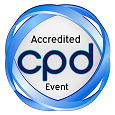
Lasse Lehtonen
Helsinki University Hospital, Finland
Title: Developing a method for identifying a university hospital’s high-alert medications
Biography
Biography: Lasse Lehtonen
Abstract
Our objective was to develop a method for identifying high-alert medications in a Finnish university hospital (HUS) by using medication error (ME) and near miss reports gathered through the hospital’s ME reporting system. Altogether 18 136 MEs and near misses were reported in 2007–2013. This study targeted to the reports where medications were coded as a contributing factor. Therapy groups and individual medications were identified. These were compared to the hospital’s drug consumption and Institute for Safe Medication Practice’s (ISMP) List of High-Alert Medications, which is probably the most widely used high-risk medication list. The reports including most reported and high-alert medications (120 reports) were qualitatively analysed by applying the simplified root cause analysis. The total sample included 249 reports with 280 medications of which 34% were ISMP’s high-alert medications. The therapeutic groups most commonly related to MEs were antibacterials for systemic use (13%), psycholeptics (10%), analgesics (9%), antithrombotic agents (9%) and anaesthetics (7%). Serious patient harm was related to cefuroxime, enoxaparin, ibuprofen, midatsolam, propofol and warfarin. A half of the MEs were related to parenteral preparations. Typical ME types were administration (34%), dispensing (18%), prescribing (15%), and documenting (15%) errors. The qualitative method deepened the understanding about key safety risks with high-alert medications, drug nomenclature, formulations and administration routes, and changes in the formulary. Combining qualitative and quantitative methods resulted in deeper insight when hospital-specific high-alert medications were identified. We identified several high-alert medications with quantitative methods, but qualitative method deepened the understanding about their key safety risks in the medication-use process.

